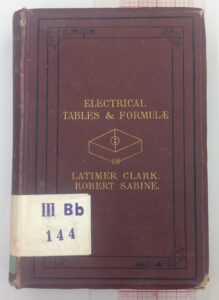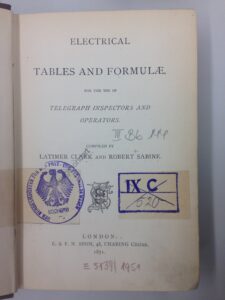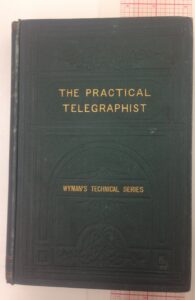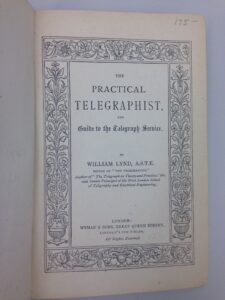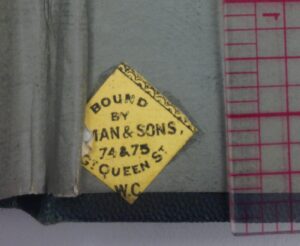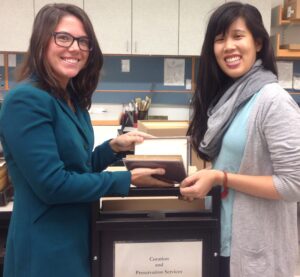
Detail of watermark found in Vannevar Bush’s handwritten note about integraphs, circa 1920s, Harold L. Hazen Papers, MC 106.
When we hold a sheet of paper to the light, sometimes we can see designs, letters or symbols embedded in it. These images are called watermarks. They can be found in both hand– and machine-made paper crafted in the western tradition.
One type of watermarking device used in machine papermaking is the dandy roll. This is a lightweight hollow cylinder that has a raised design attached to its surface. After the paper sheet has been formed on a conveyor belt, it travels to the dandy roll which lightly presses the design into the wet fibers. The roll displaces and thins the paper fibers in the area where the design appears.
Once the paper sheet is dried, the watermark can’t be changed, and remains in the paper permanently. For this reason, watermarks can provide security and authenticity, and may be used to help distinguish an original document from a copy.
In the current exhibit in the Libraries’ Maihaugen Gallery, Thanks for the Memory: 50+ Years of Computing at MIT, there is a handwritten proposal for research funding that was prepared in 1927 by MIT professor Vannevar Bush. If you look closely at the document, you can see the MIT logo in a watermark that was created using this Dandy Roll technology.
This post was written by guest blogger Ayako Letizia, Conservation Assistant, Wunsch Conservation Lab.
